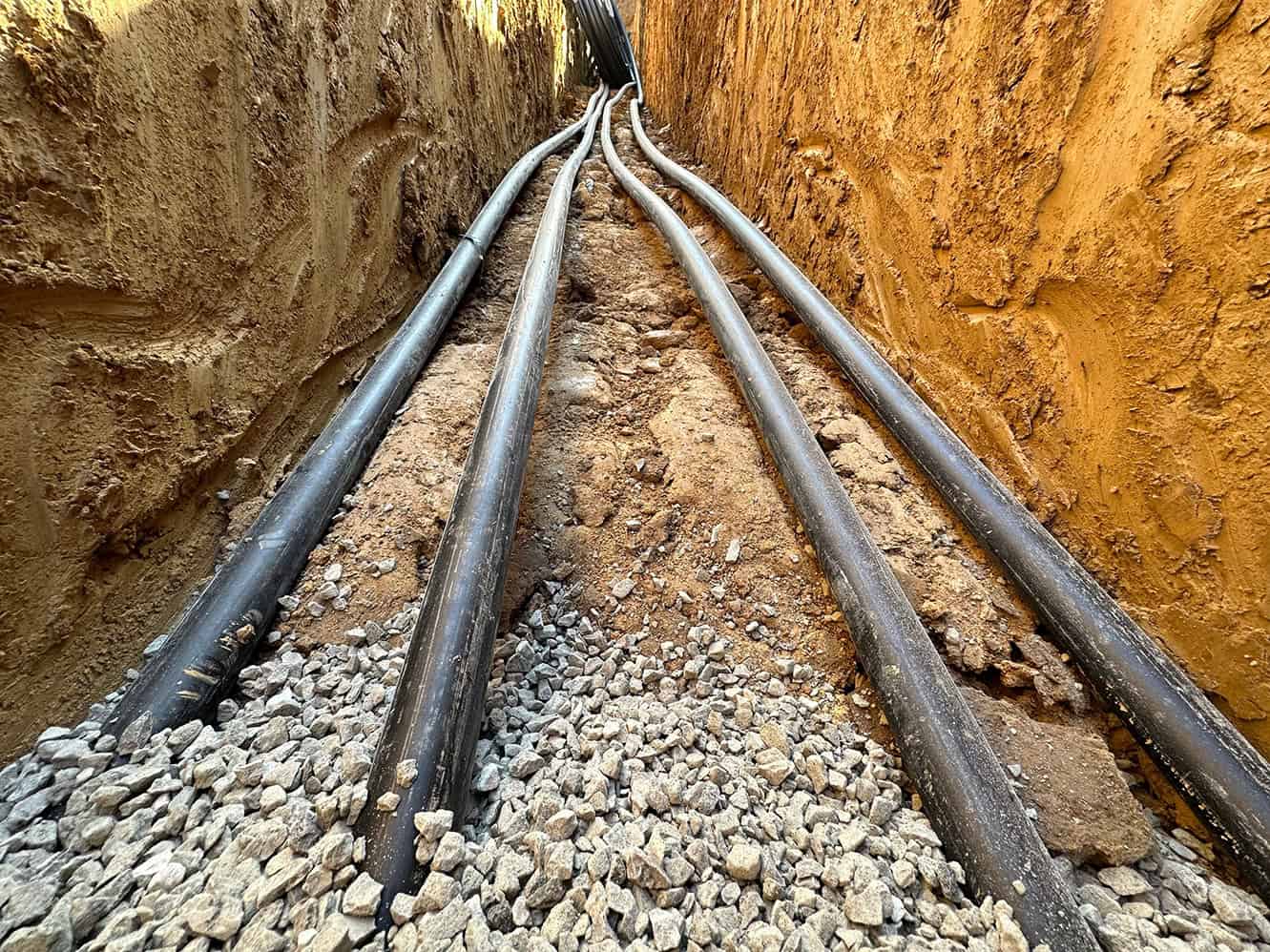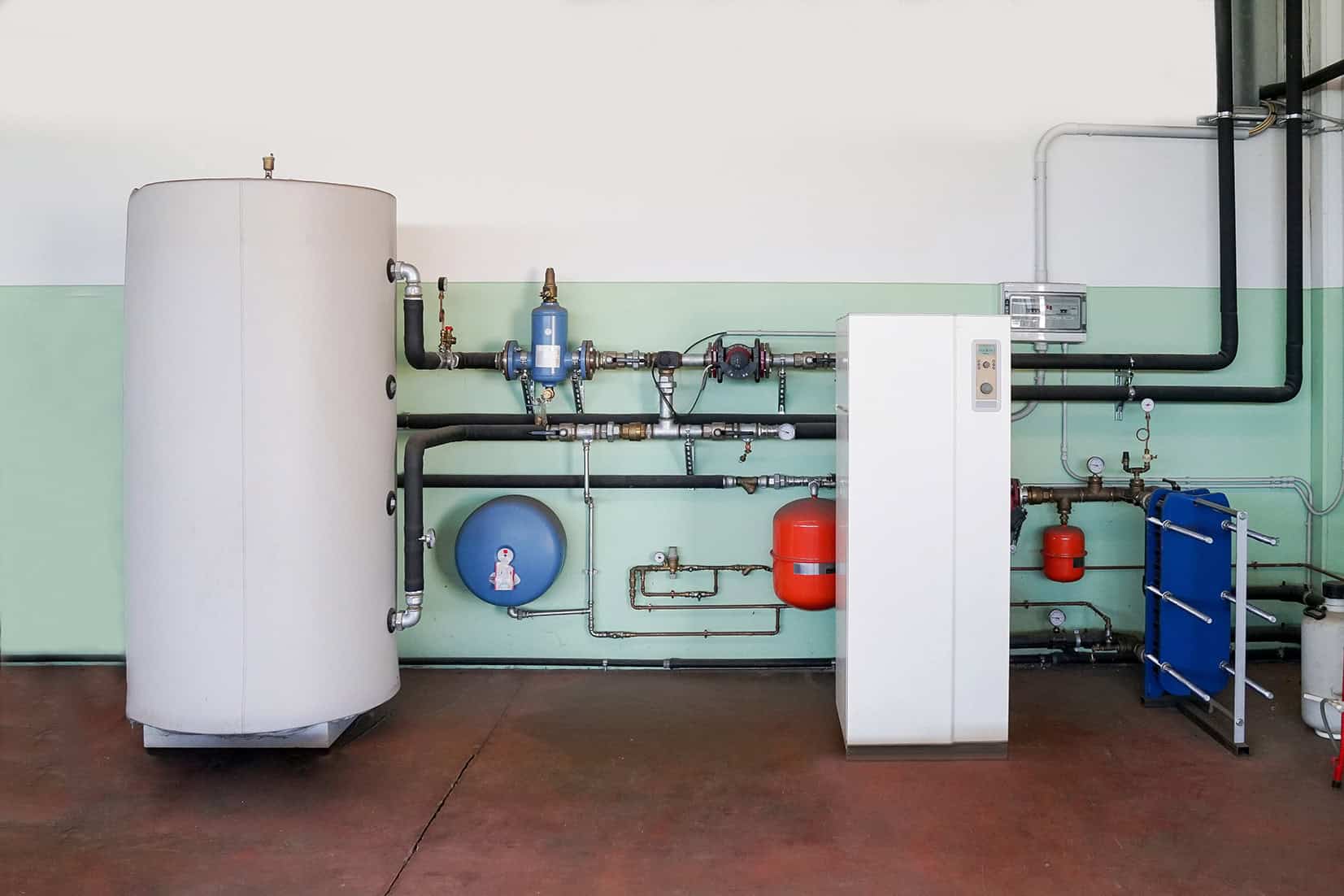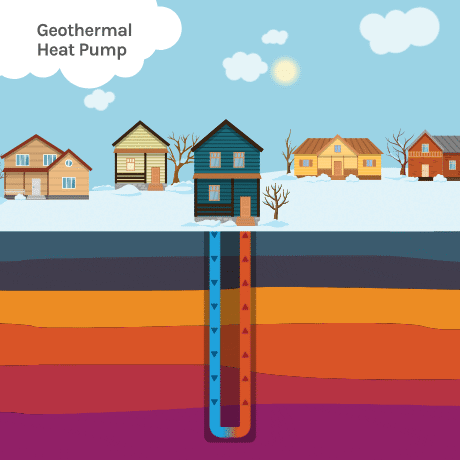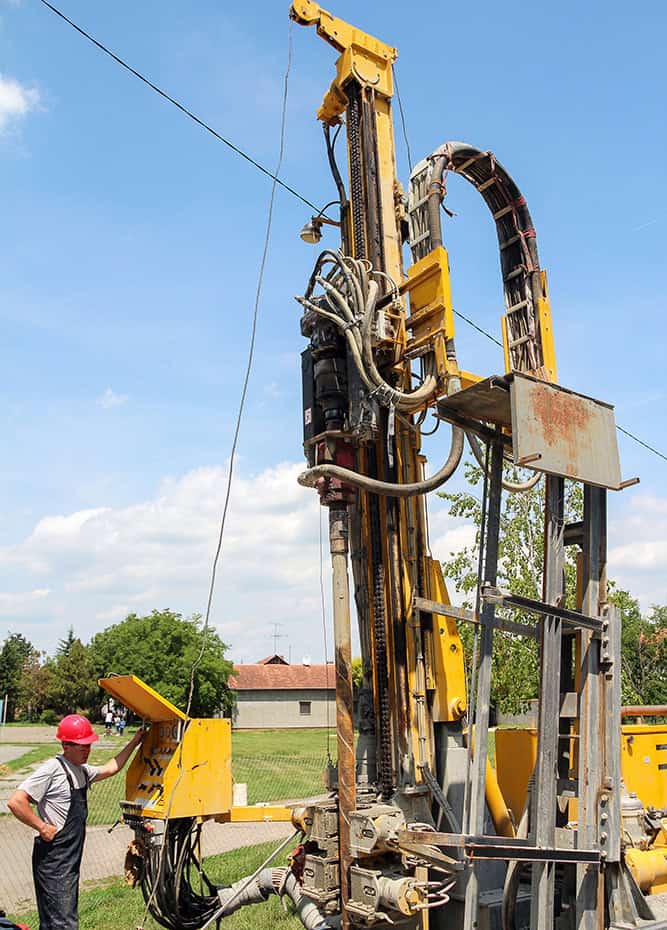Geothermal Heat Pumps: How They Work and Benefits for Your Building
Categories: HVAC
Are you looking for an energy-efficient way to control your building’s temperature? Or maybe you’re interested in a system with a long lifespan, or one that’s especially quiet for building occupants.
For one reason or another, you may be interested in what a geothermal heat pump is and how it can provide these benefits (and more) to your building — no matter the climate or season.
Table of Contents

Simply put, a geothermal heat pump uses the earth’s natural temperature to alter the temperature inside a building.
Because the temperature underground stays a consistent 40°-70° year-round, a geothermal heat pump system only has to slightly alter the temperature to reach your thermostat setting.
The ability to utilize the consistent temperature underground leads to various benefits for your facility.
Below, we’ll review the benefits of a geothermal heat pump system, and then dive deeper into how these systems work by looking at their components, the heating and cooling process, and the different types of geothermal heat pumps. We’ll also share the main differences between geothermal and traditional (air-source) heat pumps to help you decide which may be best suited for your building.
Top Benefits of Geothermal Heat Pumps
Energy Efficient
One of the most significant and immediate benefits of geothermal heat pumps is their energy efficiency.
Geothermal heat pumps can reduce your energy spend by up to 65%, which is why the Department of Energy considers them to be one of the most energy-efficient heating and cooling systems.
Here’s how it works: since geothermal heat pumps repurpose the temperature of the ground below, there is little energy expended on adjusting the temperature of the air transferred into a building. On the hottest summer days or coldest winter nights, your system doesn’t have to work harder since the temperature below ground stays the same.
Uses Renewable Resources
Unlike traditional heating and cooling systems that rely on fossil fuels, geothermal heat pumps tap into the constant temperature below the earth's surface.
Since the earth's heat is both abundant and naturally replenished, geothermal systems reduce the reliance on non-renewable resources like oil, natural gas, coal, and nuclear energy. This not only lowers carbon footprints but also cuts utility costs for building owners.
Longer Lifespan
Geothermal heat pumps offer exceptional durability, outlasting many traditional HVAC systems. The key to their longevity lies in the design — the underground components are buried beneath the surface, shielded from harsh weather conditions and external damage. This protection reduces the need for frequent maintenance and minimizes the risks posed by environmental factors or accidental interference.

The heat pump itself, located indoors, experiences less wear and tear than systems placed outdoors (such as air conditioning units), leading to a typical lifespan of 20-25 years, while the underground pipes can function efficiently for up to 50 years.
With fewer repairs and longer service life, geothermal heat pumps provide a reliable, long-term solution for heating and cooling needs.
Bonus benefit: because the largest component is held underground, geothermal heat pumps are often quieter than other types of heat pumps.
How Geothermal Heat Pumps Work
Components
Heat Pump
The heat pump portion operates like any other type of heat pump with the goal of transferring heat from one place to another. But instead of coming into contact with the air outdoors, it interacts with the constant temperature below ground.
Source Heat Exchange Piping Loops
This is a network of pipes underground that carries the liquid being heated or cooled, depending on the season. Most commonly made of polyethylene, these durable pipes are made to withstand high amounts of pressure.
Indoor Unit
The indoor unit consists of the compressor, pump, and indoor air coil and is the interface between the source piping and the distribution ductwork.
Distribution System
This is the ductwork that carries the heated or cooled air throughout your building.
Many existing ductworks are compatible with geothermal heat pumps since they distribute air similarly to other types of HVAC systems.

Process
So, now we know the components, but how exactly do they work?
- Step 1: Water, or a water-glycol (antifreeze) solution, runs through the source heat exchange piping loops.
- Step 2: The natural temperature underground either heats the liquid (in cold months) or absorbs the heat from the liquid (in warm months).
- Step 3: The water returns to the heat pump, and the system’s refrigerant components transfer the temperature from the source heat exchanger to the load heat exchanger.
- Step 4: The heated/cooled air is distributed throughout a building using the ductwork system.
More details about summer versus winter:

In the winter, the water that runs through the pipes absorbs heat from underground and pushes the heated air throughout the building.
In the summer, heat from the air in your building is collected by the heat pump and is dispersed underground. The water then comes back cooler and the cool air is distributed throughout your building.
Types of Geothermal Heat Pumps
Similar to other systems, there are also different types of geothermal heat pumps designed to fit the needs of your space.
A closed loop system circulates water within underground piping, while an open loop system draws water from a pond or well, running it through the refrigerant components to regulate temperature. Closed loop systems depend on the stable temperature of the ground, whereas open loop systems rely on the temperature of nearby water sources.
Open loop systems are less common because they require the building owner to have access to a large body of water nearby.
Closed Loop
Closed loop systems can further be broken down into a few different types.
A horizontal ground loop lies flat at a depth of up to 10 feet underground. Because it covers a wide area, the property needs to be large in terms of surface area.
Horizontal ground loops are often placed under parking lots or other large areas that will be covered.

A vertical ground loop extends deep underground, requiring up to 500 feet in depth. This is ideal when the acreage is limited or rocks or other materials make it difficult to dig in a large area.
Pond loops are another closed loop option where the piping sits in water instead of being buried underground. Similar to open loop systems, they are less common because they require the building owner to have access to a large body of water nearby.
Differences Between Geothermal and Traditional Heat Pumps
If you're trying to decide between a traditional and geothermal heat pump, know that geothermal heat pumps stand out from traditional air source heat pumps in two key ways: the temperature source and space requirements.
Temperature Source
The main difference between geothermal and traditional heat pumps lies in where they source temperature. Traditional heat pumps, or air-source heat pumps, draw from the outdoor air to either warm or cool your home. While this method works well in moderate climates, it becomes less efficient in below-average and above-average ambient temperatures.
For instance, in colder weather, air-source heat pumps may have difficulty pulling heat from the chilly air, which can increase energy use and sometimes requires a backup heating systems to maintain comfort.

Space Requirements
Another major difference is the amount of space each type of system requires. Air-source heat pumps use above-ground outdoor units, which require space outside or on top of a building. These outdoor units also require clear space around them to ensure proper airflow and operation.
On the other hand, geothermal heat pumps require a series of underground loops to circulate liquid. While the system’s components are mostly out of sight, the installation requires ample underground space.
Considering the main two geothermal options, vertical loop systems are typically used when space is limited, as they require less surface area but deeper drilling, whereas horizontal systems need more land but involve shallower digging
In conclusion, geothermal heat pumps offer a reliable, energy-efficient, and long-lasting solution for your building’s heating and cooling needs. By tapping into the earth’s constant underground temperature, these systems reduce energy costs, use renewable resources, and provide quiet, low-maintenance operation. Whether you’re aiming for sustainability, efficiency, or long-term cost savings, a geothermal heat pump could be the perfect fit for your facility.
Geothermal Heat Pump and HVAC Services with RBI
RBI is a premier full-service plumbing, mechanical, service, controls, and design-build company. We provide custom services tailored to meet your needs and requirements at each stage of your HVAC system journey, from helping you find the right equipment to installing and maintaining your system.
Read about the importance of preventative maintenance and predictive maintenance for your HVAC system.
